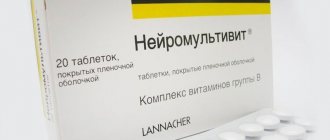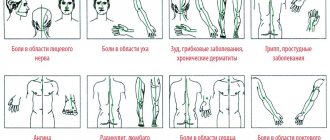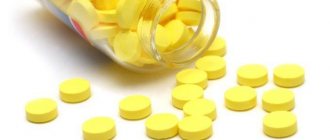Pharmacological properties
The drug has antitussive, secretomotor and secretolytic properties and belongs to the category of mucolytic drugs.
The action of the medication is aimed at reducing the viscosity of the secretory fluid that accumulates in the bronchi. This process is due to the content of polysaccharides in the drug and its stimulating effect on the cells of the mucous membranes of the bronchi, responsible for the production and formation of secretory fluid (sputum).
It is assumed that the capsules take part in the formation of surfactant.
Forms of release of the drug
The drug "Bromhexine" is the best expectorant. It is available in tablets, syrup, drops and solution for injection. Only a doctor can determine which form of treatment to choose. Although the instructions for Bromhexine note that they all have a similar effect, each of them still has certain features.
- For children, Bromhexine is most often prescribed in syrup form. It does not contain lactose, sugar and alcohol. The only auxiliary components in the syrup are sorbitol, citric acid, vanillin and some other food additives that are absolutely safe for children.
- The most common form is Bromhexine tablets. The instructions for use note that they can be taken at any age, starting from 6 years. After all, tablets are available in two varieties - 4 mg and 8 mg.
- Bromhexine drops are also effective. Its peculiarity is that in addition to the active substance, the composition includes additional components: extracts of thyme, eucalyptus, fennel, anise, mint oil and menthol. These substances enhance the effect of the drug and make its taste more pleasant.
Pharmacodynamics and pharmacokinetics
The drug has good absorption capacity and is quickly absorbed from the gastrointestinal tract. When it enters the bloodstream through the liver, the drug undergoes metabolic processes.
Bioavailability is about 20%. The maximum level of the drug in the blood is observed after 1 hour. The components of the drug are distributed throughout almost all tissues and organs in the body.
From 85% to 90% of the drug leaves the body through the renal system along with urine. In this case, a larger number of components are excreted from the body in the form of metabolites. The main metabolite of the drug is ambroxol.
The components of the capsules enter into an active relationship with proteins. The half-life of the active substance is about 12 hours.
The drug is able to penetrate the blood-brain barrier. At the same time, in small quantities the components can penetrate the placental barrier. Clearance may change in patients with severe functional disorders of the kidneys and liver.
Bromhexine
Bromhexine
is a synthetic derivative of the active substance (vasicin) of plant origin. Bromhexine has a secretolytic and secretomotor effect in the bronchial tract, as a result of which bronchial secretion increases, the viscosity of mucus (sputum) decreases, and the activity of the ciliated epithelium increases, which promotes the evacuation of mucus (sputum). After oral administration, bromhexine is almost completely absorbed. The half-life is about 0.4 hours. The first-pass effect is approximately 80%, with the formation of biologically active metabolites. Bromhexine does not accumulate. Plasma protein binding is 99%. Bromhexine penetrates the placenta, into the cerebrospinal fluid and into breast milk. It is excreted mainly by the kidneys in the form of metabolites.
The description of the drug is not intended to prescribe treatment without the participation of a doctor.
Indications for use
Bromhexine is a tablet for children that is used in the treatment of pathologies of the respiratory system, which are accompanied by the formation of secretory fluid that is difficult to separate.
Indications:
- development of tracheobronchitis;
- chronic form of bronchitis, accompanied by obstructive disorders in the bronchi;
- bronchial asthma;
- pneumonia (chronic form);
- cystic fibrosis.
The drug is also indicated during diagnostic procedures related to intrabronchial studies, as well as in the preoperative period. The drug can be used to prevent the formation of sputum in the bronchi.
Capsules can be used as an independent treatment or as part of complex therapy.
Syrup and tablets Bromhexine (Berlin Hemi): instructions, price and reviews
Bromhexine Berlin Chemie instructions for use refer to drugs that stimulate the motor function of the respiratory tract and secretolytics.
Tablets 4 mg and 8 mg, syrup, solution have mucolytic, expectorant and bronchodilator effects.
Reviews from patients and recommendations from doctors indicate that this medicine helps in the treatment of cough, including dry cough, bronchitis and asthma.
What does Bromhexine Berlin Chemie help with?
Indications for the use of the drug include diseases of the respiratory tract, the course of which is associated with the formation of a difficult-to-discharge viscous secretion:
- Cystic fibrosis.
- Chronic bronchitis with a broncho-obstructive component.
- Tracheobronchitis.
- Chronic pneumonia.
- Bronchial asthma.
Instructions for use
Bromhexine tablets and solution are taken orally:
- adults and children over 10 years old - 8 mg 3-4 times a day;
- children under 2 years of age - 2 mg 3 times a day;
- at the age of 2 to 6 years - 4 mg 3 times a day;
- at the age of 6 to 10 years - 6-8 mg 3 times a day.
If necessary, the dose can be increased for adults to 16 mg 4 times a day, for children - up to 16 mg 2 times a day.
In the form of inhalations, adults - 8 mg, children over 10 years old - 4 mg, aged 6-10 years - 2 mg. At the age of up to 6 years - used in doses of up to 2 mg. Inhalations are carried out 2 times a day. The therapeutic effect may appear on days 4-6 of treatment.
Parenteral administration is recommended for treatment in severe cases, as well as in the postoperative period to prevent the accumulation of thick sputum in the bronchi. Administer 2 mg subcutaneously, intramuscularly or intravenously 2-3 times a day slowly over 2-3 minutes.
Side effects
Bromhexine is usually well tolerated. However, in rare cases, some unwanted effects may occur:
- angioedema;
- dizziness;
- anaphylactic reactions;
- Stevens-Johnson syndrome;
- increased cough;
- diarrhea;
- hives;
- Lyell's syndrome;
- increased aminotransferase activity in the blood;
- dyspeptic disorders;
- nausea;
- exacerbation of peptic ulcer of the duodenum and stomach;
- bronchospasm;
- vomit;
- breathing disorder;
- increased sweating;
- stomach pain;
- skin rashes;
- skin itching;
- headache;
- chills;
- anaphylactic shock.
Children, pregnancy and breastfeeding
Prescribed if the expected benefit to the mother exceeds the expected risk to the fetus or child.
Syrup and tablets are contraindicated in children under 2 years of age. Due to the specific dosage, it is advisable for children under 6 years of age to take syrup; for children over 6 years of age, syrup and tablets for children.
Analogues of the drug Bromhexine
Analogues are determined by structure:
- Vero-Bromhexine.
- Phlegamine.
- Bromhexine Berlin-Chemie (MS; Grindeks; Nycomed; -Ruspharm; -Akri; -Egis;).
- Solvin.
- Flexoxin.
- Bronchotil.
Analogues of action include:
- Ambroxol.
- Acestine.
- ACC.
- Lazolvan.
- Ambrobene.
- Acetylcysteine.
- Fluditek.
- Fluimucil
- Ascoril.
- AmbroHexal.
- Libexin.
- Bronchosan.
- Flavamed.
- Bronchoxol.
Vacation conditions and price
The average price of Bromhexine (8 mg tablets No. 50) in Moscow is 30 rubles.
Available without a prescription. Should be stored in a dry place, protected from light, at a temperature not exceeding 25 °C. Shelf life – 5 years.
Source: https://instrukciya-po-primeneniyu.ru/bromgeksin.html
Contraindications
The tablets have some limitations related to the patient’s condition and the effect of the main substance.
Contraindications:
- intolerance to the composition of the product (allergy to the drug);
- stomach and duodenal ulcers;
- the period of bearing or feeding a child;
- children under 3 years of age;
- lactose intolerance, glucose-galactose malabsorption syndrome, lactase deficiency.
The medicine can be prescribed with extreme caution in the following cases:
- presence of bleeding in the stomach;
- bronchial pathologies caused by increased accumulation of sputum;
- hemoptysis;
- kidney failure;
- liver failure.
In this group of patients, treatment with the drug is carried out only under the supervision of the treating pulmonologist.
Instructions for use, dosage
The dosage regimen depends on the form of the pathological process, as well as the age of the patient.
In this case, the dosage can be adjusted by the attending physician taking into account the patient’s condition.
For children
The tablets are intended for oral administration. Take capsules regardless of meals. In children aged 3 to 6 years, the recommended dosage is 1 tablet 3 times a day.
Children from 6 to 10 years old and patients with underweight (less than 50 kg) are prescribed 3 to 6 capsules per day. In this case, the dosage must be divided into 3 equal doses.
In children over 10 years of age, 6-12 tablets per day are prescribed. This number of capsules should also be divided into 3 equal parts. In most cases, the drug begins to show effectiveness after the first 3-6 days of therapy. The course of treatment ranges from 4 days to 4 weeks.
It should be taken into account that for patients with impaired renal function, the dosage should be reduced. In this case, the interval between taking capsules should be increased.
For adults
Adults are prescribed 8 mg of the drug. In this case, the resulting daily dosage must be divided into 3-4 equal doses. The drug begins to show effectiveness on the 4-6th day of treatment.
Bromhexine tablets for children
The duration of therapy should not exceed 4 weeks.
What does Bromhexine help with? Instructions for use of tablets and syrup for children
Category: b 06.25.2017 · : 4 · Reading time: 5 min · Views:
Bromhexine is a mucolytic, expectorant and bronchodilator drug. Instructions for use suggest taking Berlin Hemi cough tablets and children's syrup. The drug stimulates the motor function of the respiratory tract, thins and accelerates the discharge of sputum.
Release form and composition
Bromhexine is produced in such dosage forms as:
- Tablets 8 mg (Berlin Hemi) (in cell packs and jars of various packaging).
- Tablets for children 4 mg (in blisters of 10 pieces).
- Syrup 4 mg/5 ml (in bottles of 60 and 100 ml).
- Oral solution 4 mg/5 ml (in bottles of 100 ml).
The active substance included in the drug is bromhexine hydrochloride.
Pharmacological properties
The drug reduces the viscosity of bronchial secretions, as it depolarizes the acidic polysaccharides it contains and stimulates the secretory cells of the bronchial mucosa, which produce secretions containing neutral polysaccharides. Bromhexine Berlin-Chemie, the main active ingredient of which is bromhexine hydrochloride, provides a weak antitussive effect.
The drug thins mucus, increases its volume and stimulates discharge. Also, Berlin-Chemie Bromhexine, the instructions for use confirm this, improves the formation of surfactant, which stabilizes alveolar cells during the respiratory process. The effect of taking the drug becomes noticeable 2-5 days after starting treatment.
The active substance from tablets or solution, depending on the release form, is quickly and almost completely absorbed into the gastrointestinal tract. In the liver, its intensive demethylation and oxidation occurs, resulting in the formation of biologically active metabolites that are widely distributed in the tissues of the body.
Taking Bromhexine tablets and other forms of release of the drug does not lead to its accumulation in the body; it is excreted mainly by the kidneys in the urine, mainly in the form of metabolites. When taking it, it is necessary to take into account that it tends to penetrate the placenta, into breast milk and into the cerebrospinal fluid.
With repeated use, the active substance may accumulate. Chronic renal failure, as well as other severe kidney and liver diseases, may make it difficult to excrete drug metabolites.
Bromhexine syrup, tablets: what it helps with, who it is prescribed for
Indications for use are painful conditions of the bronchopulmonary system in the presence of difficult-to-clear viscous sputum:
- emphysema;
- pneumoconiosis;
- tracheobronchitis;
- cystic fibrosis;
- bronchial asthma;
- tuberculosis;
- obstructive bronchitis;
- pneumonia;
- bronchiectasis.
Why is Bromhexine Berlin-Chemie still prescribed?
The drug is also used:
- during diagnostic and therapeutic clinical intrabronchial manipulations;
- in the preoperative period for sanitation (health improvement) of the bronchial tree;
- in the postoperative period for the preventive removal of sputum accumulation in the bronchi.
Bromhexine: instructions for use and dosage
The solution, tablets and syrup are taken orally. The dosage is determined based on the patient’s age:
- Children under 2 years of age are recommended to take 2 mg 3 times a day;
- from 2 to 6 years – 4 mg 3 times a day;
- from 6 to 10 years – 6-8 mg 3 times a day;
- over 10 years old and adults - 8 mg 3 times a day.
If necessary, the dose can be increased: for adults - up to 16 mg 4 times a day, for children - up to 16 mg 2 times a day.
Use of the drug in the form of inhalations:
- Children under 6 years old - up to 2 mg 2 times a day;
- from 6 to 10 years - 2 mg 2 times a day;
- over 10 years - 4 mg 2 times a day;
- Adults - 8 mg 2 times a day.
The therapeutic effect usually appears on days 4-6 of use. The duration of treatment ranges from 4 to 28 days.
Instructions for using injections
Parenteral administration is recommended for treatment in severe cases, as well as in the postoperative period to prevent the accumulation of thick sputum in the bronchi. Administer 2 mg subcutaneously, intramuscularly or intravenously 2-3 times a day slowly over 2-3 minutes.
Contraindications
Bromhexine should not be taken if you are hypersensitive to the active substance or other components of the drug, or if you have a peptic ulcer. It is prescribed with caution for renal and liver failure, bronchial diseases in which excessive amounts of secretion accumulate and for gastric bleeding.
According to the instructions, Bromhexine should not be taken by pregnant and breastfeeding women. Also, tablets should not be given to children under 6 years of age, although other forms of the drug may be used.
Side effect
- skin rash;
- headache;
- increased sweating;
- dizziness;
- cough;
- dyspeptic symptoms;
- bronchospasm.
Analogues of the drug "Bromhexine"
Complete analogues for the active component:
- Bromhexine 4 mg or 8 mg Berlin-Chemie.
- Bromhexine Grindeks (MS; Nycomed; -Akri; -ratiopharm; -Rusfar; -UBF; -Ferein; -Egis).
- Bronchotil.
- Bromhexine hydrochloride.
- Vero-Bromhexine.
- Solvin.
- Flexoxin.
- Phlegamine.
Price in pharmacies
The minimum price for Bromhexine 8 mg tablets (Moscow) is 22 rubles per pack of 50 pieces.
Syrup 4 mg/5 ml with apricot flavor 100 ml can be bought for 89 rubles, mixture Bromhexine 4 Berlin-Chemie 4 mg/5 ml 60 ml - for 199 rubles.
In Minsk, oral drops 8 mg / 1 ml 20 ml ×1 (Crevel Meuselbach, Germany) are sold for 2.5 bel. ruble The price of the drug in Kyiv starts from 4 hryvnia for 8 mg tablets. A dosage of 4 mg in Kazakhstan costs 305 tenge.
Reviews
As a rule, reviews of Bromhexine are left by patients who understand what the tablets are for, namely, to liquefy viscous sputum in order to remove it as quickly as possible, and are positive. In most cases, the drug copes with its task perfectly and practically, with rare exceptions, does not lead to side effects.
Negative reviews come from parents who want to cure their child’s cough as soon as possible, and if a quick result is not observed, they speak negatively. Doctors remind that Bromhexine syrup for children is intended to soften bronchial secretions, and various bronchopulmonary pathologists require an integrated approach.
Therefore, before giving your baby any medicine, you simply need to seek qualified advice from a pediatrician and strictly follow his instructions.
Source: https://www.otchegopomogaet.ru/bromgeksin-instrukciya-po-primeneniyu.html
Side effects
In most cases, the drug is well tolerated by all groups of patients and does not cause any negative effects. However, in rare cases, the drug can lead to adverse reactions associated with the action of the active component or the characteristics of the patient’s body.
Side effects:
- Disorders of the digestive system: dyspeptic disorders, disturbances in the production of hepatic transaminases - increased amounts.
- Malfunctions of the central nervous system: development of dizziness and headaches.
- Disorders of the skin and subcutaneous tissue: rashes, hyperhidrosis.
- Respiratory disorders: coughing attacks, development of bronchospasms.
- Allergic reactions: urticaria, fever, angioedema, anaphylactic reactions.
If adverse reactions occur, including unreported symptoms, you should consult your healthcare professional for advice.
Overdose
If the doses prescribed by the doctor are exceeded, negative symptoms may develop.
Overdose:
- development of nausea and vomiting;
- diarrhea syndrome;
- various gastrointestinal disorders.
If such symptoms occur, you should stop taking further capsules and consult a specialist. Gastric lavage may be necessary. It is recommended to artificially induce vomiting and drink large amounts of water.
There is no specific antidote for intoxication.
special instructions
Bromhexine is used orally only. The tablets are enteric and do not cause problems when taken. However, in some cases it is possible to pre-grind the capsule. This is necessary if you have problems with swallowing or when using the medication in childhood.
In the presence of gastric ulcers, as well as signs of gastric bleeding, treatment with the drug should be carried out under the strict supervision of a specialist.
The medicine should be used with extreme caution in patients with bronchial asthma.
When using the medication, in rare cases, the development of Stevens-Johnson and Lyell's disease was observed. If such conditions or other allergic manifestations occur on the skin and mucous membranes, it is necessary to temporarily discontinue further use of the drug and contact your doctor for advice.
The mucolytic properties of the drug are significantly increased by consuming a sufficient amount of fluid during the entire period of therapy.
In childhood, treatment is carried out with additional massage actions to facilitate the removal of mucus from the bronchi.
Tablets are prohibited for use in the 1st trimester of pregnancy, as their components are able to penetrate the placental barrier. However, the use of the medication in the 2nd and 3rd trimester of pregnancy is allowed. At the same time, only the attending physician should prescribe medication during this period, taking into account possible risks or benefits.
The drug does not have a negative effect on a person’s psychomotor functions, therefore it is allowed to drive a car or carry out other work that requires increased concentration. However, if side effects develop, great caution should be exercised when carrying out this work, as well as when driving vehicles.
Indications for use Bromhexine
The drug is prescribed for the following pathologies: respiratory tract diseases accompanied by the formation of difficult-to-discharge viscous secretions:
- tracheobronchitis,
- chronic bronchitis with a bronchial obstruction component,
- bronchial asthma,
- cystic fibrosis,
- tuberculosis,
- spastic bronchitis,
- bronchiectasis,
- emphysema,
- pneumoconiosis,
- chronic pneumonia,
- chest injuries, pre- and postoperative period.
Drug interactions
It is forbidden to use capsules together with alkaline solutions.
The drug is not prescribed with other medications whose action is aimed at inhibiting the functions of the cough center. Such a combination can lead to difficulty in draining liquefied secretions, which will contribute to the accumulation of sputum in the lungs and cause additional complications that are dangerous to the patient’s health.
Taking capsules and antibacterial agents together can lead to an enhanced effect of the second group of drugs. A similar effect is observed with the simultaneous use of the drug and the sulfonamide group of drugs. In this case, components of other drugs can penetrate into the secretory fluid, especially in the first few days of treatment.
The combination of tablets and non-steroidal anti-inflammatory drugs (NSAIDs) can contribute to the development of irritation in the gastrointestinal mucosa.
If you are taking other medications while you are prescribing Bromhexine, you should inform your doctor in advance.
Analogs
Bromhexine is a tablet for children, which in some cases can lead to the development of hypersensitivity reactions. If such effects occur, it is necessary to discontinue further use of the capsules and prescribe another drug with similar effects and indications.
Analogues:
- Ambroxol. This medical product is produced in the form of syrup for oral administration. The main ingredient of the drug is the substance of the same name, ambroxol. The medication belongs to the category of mucolytic and expectorant drugs. The active component enhances secretory motility in the bronchi and is used in the presence of the following pathologies: diseases of the respiratory system, which are accompanied by the formation of sputum - various forms of bronchitis, pneumonia, bronchial asthma, chronic obstructive diseases of the pulmonary system. The daily dosage is developed individually, based on the patient’s age, and on average ranges from 15 to 30 mg per day. The duration of therapy is determined by a specialist in each case separately according to the severity and neglect of the pathological process. Contraindications to the use of syrup: 1st trimester of pregnancy, breastfeeding, allergies to the composition, fructose intolerance, children under 2 years of age. Terms of sale through pharmacies - over-the-counter. The cost of a bottle in Moscow pharmacies starts from 450 rubles.
- Bronchorus. This drug is a domestic development, produced in the form of enteric capsules or syrup for oral administration. The main ingredient of the drug is ambroxol, a substance that exhibits high mucolytic, secretory and expectorant properties. The medication is indicated in the treatment of the following diseases: acute or chronic forms of pathologies accompanied by the formation of sputum in the bronchi - chronic obstructive pulmonary pathologies, bronchial asthma, pneumonia, the presence of bronchitis, bronchiectasis. In adults and children over 12 years of age, 1 capsule is prescribed daily, 3 times a day. The duration of treatment is developed individually by the doctor. Restrictions on taking the medicine: children under 12 years of age (other dosage forms are used under 12 years of age - syrup), 1st trimester of pregnancy, allergies to components, lactose intolerance. Terms of sale - without a prescription. Prices for medicine vary between 20-30 rubles. per bottle.
- Bronchoxol. This medication is produced in Russia in the form of a solution for oral use. The active substance of the product is ambroxol. The action of this component is aimed at liquefying and removing mucus from the bronchi. The medicine is used in the treatment of pathologies of the respiratory system, which are accompanied by the formation of viscous sputum in the bronchi. Indications: bronchial asthma, bronchitis (chronic and acute forms of the disease), chronic obstructive pulmonary diseases (COPD), development of pneumonia, bronchiectasis. Take the solution orally after meals, 15-30 mg per day, depending on the age of the patient. Treatment is carried out for 1-4 weeks. In this case, the duration of the course is determined in each case individually and may vary depending on the patient’s condition. Contraindications to taking syrup: fructose intolerance, 1st trimester of pregnancy, children under 2 years of age, allergies to the composition of the medication. Conditions of release: without a prescription. The price of syrup in regional and regional pharmacies ranges from 210 to 280 rubles. per bottle.
- Lazolvan. This medical product is manufactured at a Russian pharmaceutical plant in the form of a solution for oral use or inhalation. The drug exhibits high mucolytic and secretomotor properties. The medicine is used in the treatment of respiratory diseases, which are accompanied by the formation of sputum (secretory fluid) in the bronchi. Indications for prescribing the solution: bronchial asthma, chronic obstructive pulmonary disease, pneumonia, bronchitis, bronchiectasis. 1-2 injections are prescribed per day in the form of inhalations. In the form of an oral solution, the daily dosage varies from 1 to 4 ml 2-3 times a day, depending on the age of the patient. Restrictions on the use of the medicine: 1st trimester of pregnancy, breastfeeding, allergy to the medicine. The method of dispensing from pharmacies is over-the-counter. The cost of a bottle in commercial and state pharmacies starts from 249 rubles.
Lazolvan syrup for children
Bromhexine is a tablet for children, which, if intolerance reactions develop, should be replaced with similar drugs only with the permission of the treating specialist. Self-prescription of analogues can lead to the development of complications or other negative consequences.
Bromhexine 8 mg 20 tablets instructions for use INN Bromhexine Akrikhin, Russia – POISKAPTEK.RF
Cough, which is a protective reflex reaction of the respiratory system, occurs in many infectious diseases (laryngitis, bronchitis, pneumonia, etc.).
As a rule, at the beginning of the disease there is a dry paroxysmal cough, which soon turns into a wet cough with difficult to separate sputum. In this case, it is advisable to take medications that help the body quickly remove phlegm - mucus, which contains pathogenic microorganisms.
Bromhexine cough tablets are widely used, the features of which we will discuss in this article.
Bromhexine - composition and indications for use
Bromhexine is a drug whose main active ingredient is bromhexine hydrochloride.
The auxiliary components in the tablet form of the drug are often sugar, potato starch, calcium stearate and some other substances.
It is worth noting that the tablet dosage form is convenient to use and provides high dosing accuracy.
Bromhexine is prescribed for the following diseases:
- tracheobronchitis;
- obstructive bronchitis;
- emphysema;
- bronchial asthma;
- pneumonia;
- pneumoconiosis;
- pulmonary tuberculosis, etc.
This drug can also be used to sanitize the respiratory tract in the pre- and postoperative period, to prevent the accumulation of mucus after chest injuries.
Medicinal effect of bromhexine
Bromhexine has a mucolytic and expectorant effect. The active substance is quickly absorbed from the gastrointestinal tract and distributed in the tissues of the body. Penetrating into the respiratory tract, it changes the structure of sputum, promoting its dilution and a slight increase in volume. Thanks to this, mucus is removed from the body more efficiently and quickly.
In addition, it is believed that bromhexine stimulates the production of pulmonary surfactant, a substance that lines the pulmonary alveoli and performs protective functions. The release of this substance may be impaired due to disease, but it is essential for normal lung function.
How to take (drink) bromhexine tablets?
The active ingredient in one tablet of bromhexine can be contained in an amount of 4 or 8 mg. This should be taken into account when observing the dosage of bromhexine tablets.
The drug is taken orally with water, regardless of food intake, in the following dosage:
- adults – 16 mg (2 tablets of 8 mg) 3 – 4 times a day;
- children from 3 to 4 years old – 2 mg (half a 4 mg tablet) three times a day;
- children from 5 to 12 years old - 4 mg three times a day.
The therapeutic effect appears on days 2–5 of treatment. The course of treatment ranges from 4 to 28 days.
Safety measures and recommendations when using bromhexine:
- During treatment, it is necessary to take more fluid, which increases the expectorant effect of the drug.
- Bromhexine can be prescribed simultaneously with other drugs for the treatment of bronchopulmonary diseases, including antibiotics.
- The drug should not be prescribed in conjunction with the use of drugs that suppress the cough center (for example, codeine), as this will make it difficult to remove sputum.
- Bromhexine is incompatible with alkaline solutions.
- Because Bromhexine can increase bronchospasm; it is not recommended to be prescribed during the acute period of bronchial asthma.
- For gastric ulcers, bromhexine should be taken under the supervision of a physician.
- For patients with renal failure, lower doses or an increase in the interval between doses of the drug are recommended.
- Contraindications to taking bromhexine are: first trimester of pregnancy, breastfeeding, hypersensitivity to the components of the drug.
Price
Prices for medications may vary depending on the location of its sale and the pharmacy chain. The cost is also affected by the dosage form dispensed. You can find out the exact cost of the medication at any public or private pharmacy located at the patient’s place of residence.
| Province/region | Form/dosage | Price |
| Moscow, Moscow region | Tablets for children, 4 mg | 49-63 rub. |
| Saint Petersburg | Tablets, 8 mg | 54-65 rub. |
| St. Petersburg (suburbs) | Drops, 20 ml | 140-176 rub. |
| Leningrad region | Tablets, 8 mg | 57-68 rub. |
| Novgorod region | Tablets for children, 4 mg | 54-59 rub. |
Before taking the capsules, you should consult with your pulmonologist and carefully study the leaflet on the use of Bromhexine. Additionally, it is recommended that parents who have used the drug in therapy in children become familiar with it.
Mode of application
The treatment regimen and duration of the course should be determined by the doctor. If there are no prescriptions, follow the manufacturer’s recommendations.
Dragee Bromhexine 8 Berlin Hemi instructions for use recommends taking with plenty of drink, immediately after meals:
- Children (6-14): 1 dr. x 3 r.
- Teenagers (14+) and adults: 1-2 dr. x 3 r.
If the mucolytic does not help get rid of a dry cough after 4-5 days of use, then the advisability of continuing the course should be discussed with your doctor.
Bromhexine syrup 4 mg for children is measured with a measuring spoon (5 ml) and used in accordance with the manufacturer's instructions, unless otherwise recommended:
- (2-6) 1 l. X 3 r. during the day
- (6-14) 2 l. X 3 r.
- Teenagers (over 14 years old): 2-4 spoons x 3 times.
Children's syrup can be given to children (up to 2 years old) only with the consent of the pediatrician: half a measuring spoon 3 times a day.









